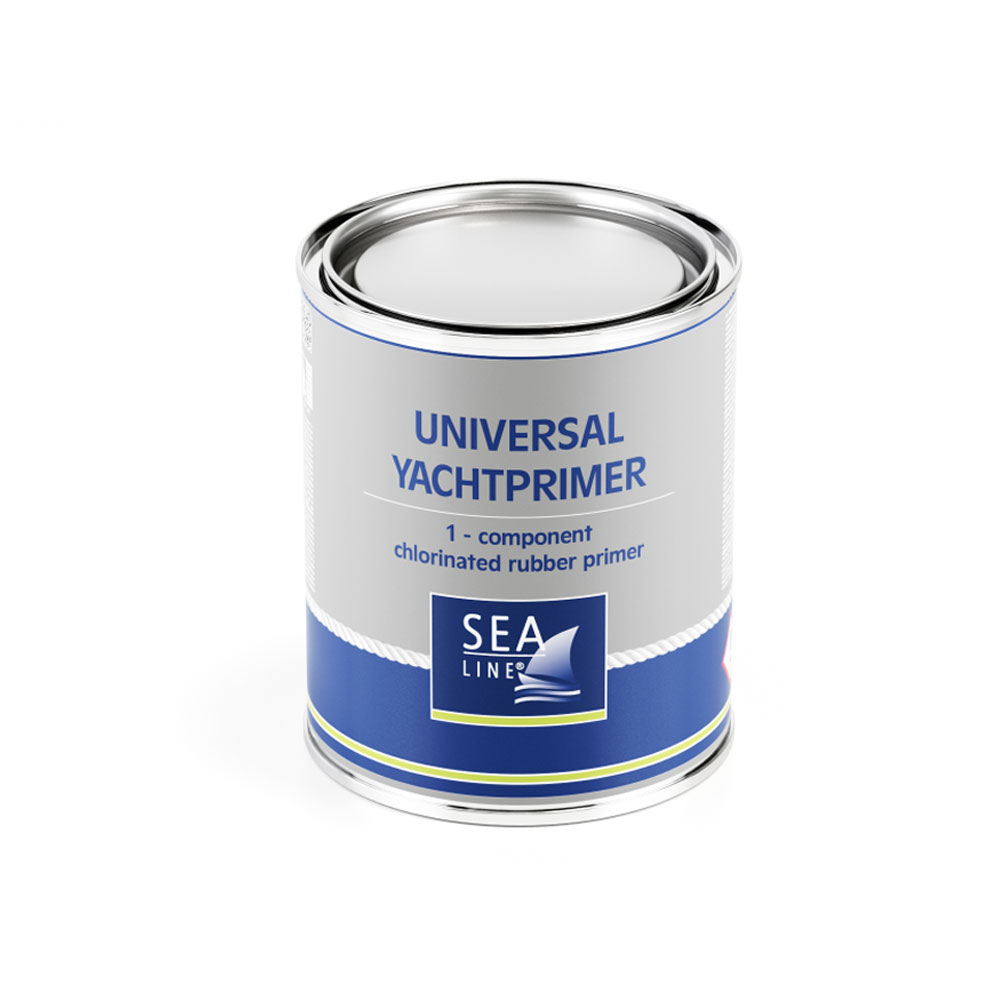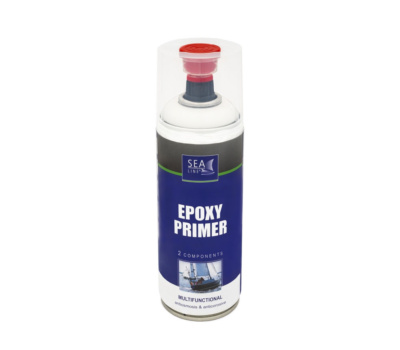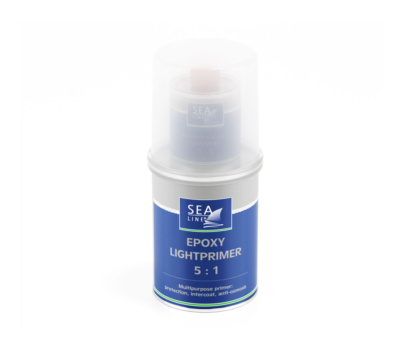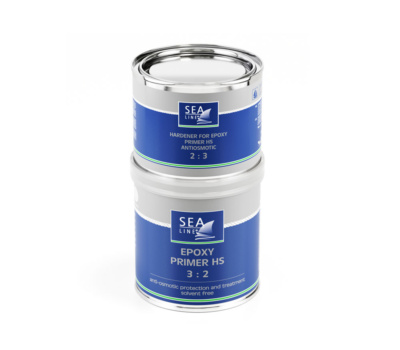A multifunctional single-component marine primer based on chlorinated rubber, recommended for use on laminate, wood, and steel.
It is certainly the easiest-to-use primer from the Sea-Line brand.
| Capacity | Code |
|---|---|
| 750 ml | 300008172 |
| 2,5 l | 300008174 |

| Type | GRP- laminates, wood, stel | |
| Place | Above and below waterline | |
| Function | Grounding Intercoating | |
| Application | brush, roll, spray gun | |
| Thinning | Thinner for 1 – component primer, varnisch, enamel | |
| Theoretical coverage For 1l | ~7 m2 for 140 μm WFT/ 65 μm DFT | |
| Number of coats | 1 – 5 | |
| Dust dry 20°C | 1 h | |
| Resistant against rain 20°C | 4 h | |
| Waterproof 20°C | 16 h | |
| Time to launch 20°C | min. 24 h | |
| Elapsed time before applying next coat 20°C | min. 5 h | |

The offered EPOXY PRIMER SPRAY 2K is a 2-component epoxy primer with multifunctional applications. This

This is a multifunctional paint that protects, enhances adhesion, and also protects against osmosis. Lightprimer

This particular product is recommended for protecting the laminate below the waterline, especially for repairing
There is a possibility of thinning antifouling, but we do not recommend this procedure due to the risk of reducing the effectiveness of the paint. If it is necessary to thin the antifouling paint, it is recommended to dilute it to a maximum of 0-5% (by volume).